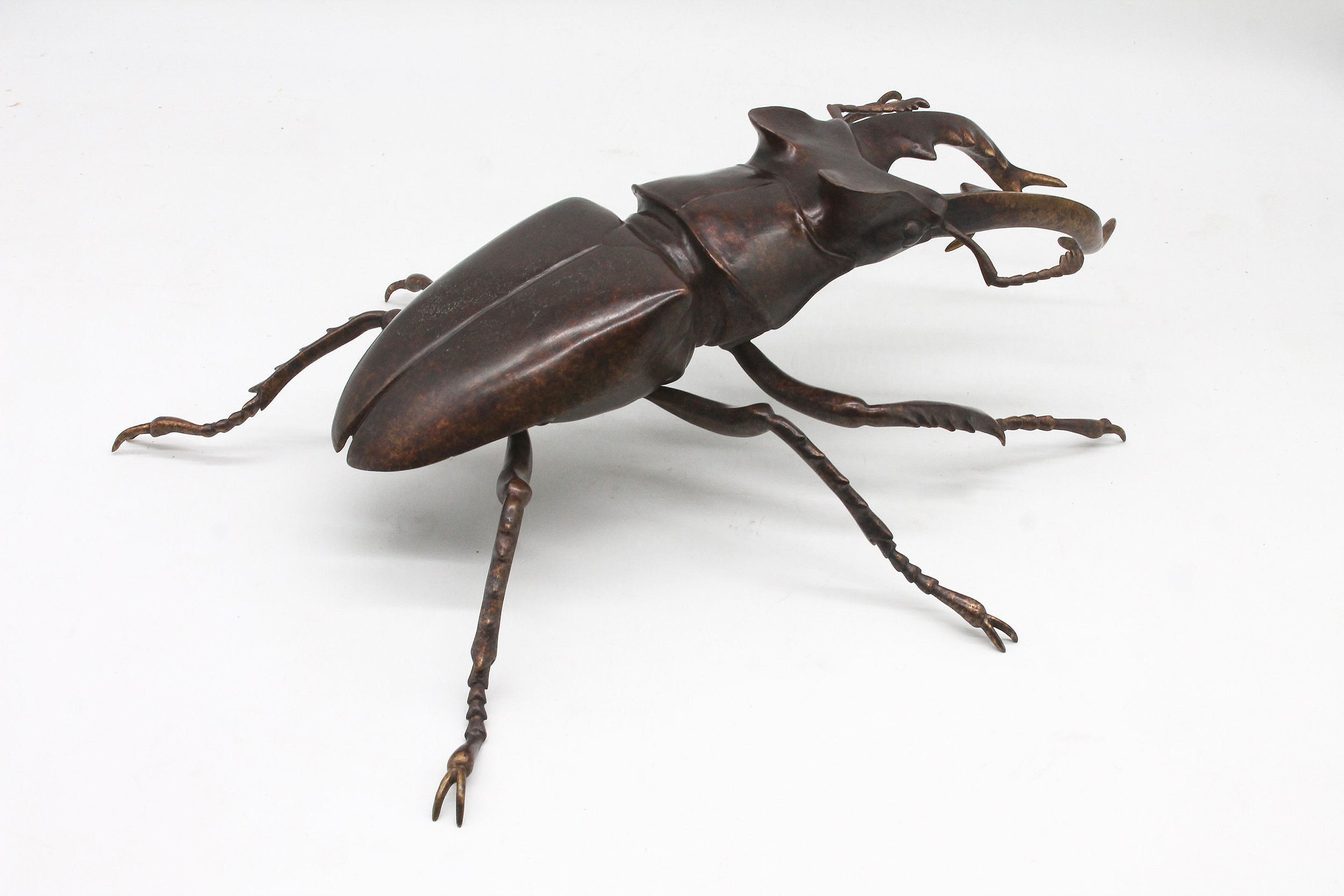In previous pieces we have covered our standard light and dark antique patinas. For custom orders we also offer a hot patina, which is applied to pre-heated bronze. We limit these finishes to just a few pieces, that include the small butterfly pull, which can be special ordered in amber- yellow; the frog knob, which can be ordered in a blue green, and the lizard lever or knob which we can patina pea green.
With our new bronze sculptures, we are developing patinas made with ferric nitrate as well as liver- of sulphur. Ferric Nitrate is a chemical compound of iron powder, nitric acid and it produces a rust red patina. Liver-of-sulphur is a chemical compound of powdered sulphur, sodium, and water. They are applied to the sculpture with a spray bottle or brush and the sculpture is preheated to a temperature of approximately 100°to 200°depending on the chemical and dilution. As the sculpture is hot, the wet patina attaches to the surface and the moisture evaporates quickly leaving behind a layer of color.
The colors these patinas produce on bronze can vary from gold to brown to red to dark red to black, depending on how hot the piece is, and how many coats are applied. The chemicals below can be mixed and diluted to produce a wide range of hues. They can also be applied over each other provided the previous patina has sufficiently dried. By layering the patinas and by using brushes and different spraying methods it is possible to develop deep mottled colors and effects. It has taken a lot of practice and years of trial and error to create the look we are seeking for each sculpture.
Words of caution to anyone thinking of learning how to patina bronze, exercise caution and a generous helping of common sense. The patinas we use are applied in a very well ventilated area and masks and gloves and protective aprons are a must. We also exercise considerable caution when heating up bronze as temperatures above 100° can burn exposed skin.
Liver of sulfur – yellow brown to black tones
Ferric nitrate – red tones
Ferric chloride – darker red tones
Bismuth nitrate and titanium dioxide – white
Cupric chloride – pea green or apple green
Cupric nitrate – blue green
A very good site for reading more about patinas and for practical advise on formulas can be found at David B. Bowman an artist in the San Francisco Bay Area.



